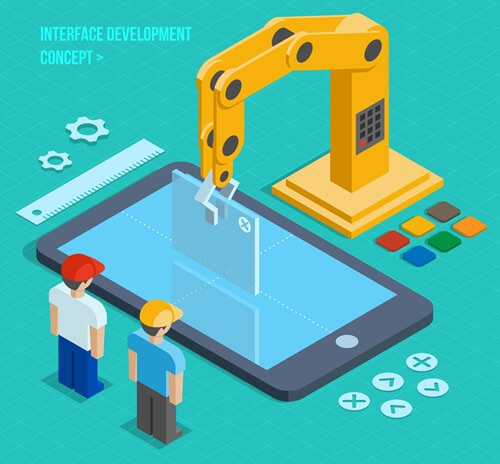Basics of User Interface Design : Learning the Concept of User Interface with android Training in Chandigarh
Android Training In Chandigarh describe the User Interface concept in very easy and Efficient manner. Let us learn about this Concept.
1. Interface design is an iterative process. Interface design activities commences once interface analysis has been completed. Each user interface design occurs a number of times, each elaborating
and refining information developed.
2. Interface designer begins with sketches of each interface state and then work backward to define objects, actions, and other important design information.
3. User interface design: (UID) creates an effective communication medium between a human and a computer. Following a set of interface design principles, design identifies interface objects and actions and then creates a screen layout that forms the basis for a user interface prototype.
4. User Interface design should be performed in conjunction with other software engineering activities.
i. Prior to UI design, One should has done domain analysis and made a first attempt at defining the problem.
ii. He/She can then employ use case analysis to help define the tasks that the UI must help the user perform.
iii. Next He/She can begin an iterative process of user interface prototyping in order to address the set of Use Cases that he/she has identified. During the prototyping process one will refine both the UI and the use cases. Eventually, results of the prototyping process will enable to finalize the requirements for the delivers system.
Terminologies of User Interface Design :
User Interface Designers use specific terms that one should understand:
1. Dialogue: The word 'dialogue' is used generically to describe the back and forth interaction between user and computer. The word is also used to mean a specific window with which a user can interact , but which is not the main UI window.
2. Control and Widget : These words are used interchangeably to describe specific components of a user interface. Typical widgets include menus, lists, input fields and scroll bars.
3. Affordance : It is set of operations that the user can do at any given point in time. Example of operations include typing into an input fields , clicking on a button or selecting an item from a menu clicking a button or selecting a menu item is commands because they cause the system to perform some computations.
4. State: At any stage in the dialogue, the system is displaying certain information in certain widgets, and has a certain affordance. Taken together, these are the system's user interface state. UI state usually changes , when the user issues a command
5. Mode : A mode is a situation in which the UI restricts what the user can do- i.e, it restricts the affordance.
6. Modal dialogue : It is one in which the system is in a very restrictive mode. The user cannot interact with any other window until he or she has dismissed the modal dialogue. The most restrictive type of modal dialogue has a single 'OK' button to dismiss the dialogue.
7. Feedback : Whenever the user does something, The response from the system is called feedback. Feedback includes displaying a message, changing a co-lour or displaying a dialogue.
How User Interface will help you to make your application in impressive form with Android training in Chandigarh?
Android Training in Chandigarh will teach you the best way to make your application responsive, best design formation, and also in efficient manner. CBitss Technologies






0 comments:
Post a Comment
Note: only a member of this blog may post a comment.